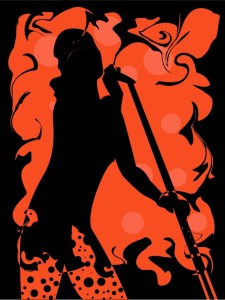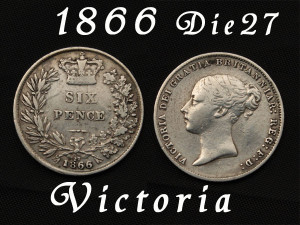1. Loosen Up
If we’re not careful with our writing we can get too tentative about it. We write too carefully at times. The old “inner editor” gets bolder and louder. Writing fast under a looming deadline forces you to free yourself. Which is a good thing. Even now, after NaNo, I feel my normal daily writing is a little freer. For this reason alone, NaNo was worth it.
2. Study the Craft
I benefitted from having novel structure wired into me. For example, whenever I’d reach a point where I wasn’t sure what to write, I’d take a moment and think about my Lead character’s objective. Then I’d start a scene where the Lead takes steps to solve the problem. I’d find the material coming to me as I needed it.
Lesson: Keep studying the craft when you’re not writing. Then when you start putting down the words, you’ll be doing some of the right things by instinct. We don’t tell somebody to just go out to the golf course and start swinging. You can kill somebody that way. We try to get them to practice and drill, and then try to have some fun when actually playing.
3. Bring in the Unexpected
When writing a scene, if things were slowing down or conflict was lagging, I’d ask the boys in the basement to send up something that was the equivalent of Raymond Chandler’s admonition to just “bring in a guy with a gun.”
Peter Dunne, author of Emotional Structure, gives similar advice. “If you think things are slowing down then throw something at your hero that forces him to run like hell.”
I did this a number of times and it worked every time.
4. Don’t Be Afraid to Skip Around in Your First Draft
I would sometimes leave one scene and jump to another scene and work on that. Then I’d go back to the previous scene and find my mind had been working on it subconsciously.
I had a special folder in Scrivener called “Random Scenes.” This is where I’d start writing a scene that came to mind, but had no idea where it would go. Some of my best writing is there, and will find its way into the book.
5. Write Everywhere
I wrote mostly in my home office, but sometimes I’d strap my AlphaSmart to my back and walk or ride my bike to Starbucks and work there for awhile. I had a doctor’s appointment, and tapped out 300 words in the waiting room. I wrote on the subway going downtown, and in my car waiting in a parking lot.
And on the treadmill, of course.
I snatched time, rested, snatched more time. Taking breaks was important between intense spurts. I’d lie on the floor with my feet up for ten or fifteen minutes. Then I’d put on rock music or suspense soundtracks and pump up the volume and write.
Those of you who have trouble finding time to write, cut out some non-essentials. Do you really have to watch Dancing With the Stars? And then snatch time to write.
6. Like Voting in Chicago, Write Early and Often
Get as much writing done as you can, as early as you can. I tell writers to follow the “Nifty 350” or “Furious 500” plan. That is, get 350 or 500 words done the very first thing in morning. Get them out of the way, and your quota seems less daunting.
7. Don’t Be Afraid
By its very design, NaNoWriMo forces you to let the story lead. You’re not always going to be able to stick to a plan. Even if you’re an outliner by nature, you have to be ready for organic rabbit trails to emerge in front of you, and have the courage to follow them. But if you do, you’re liable to find gold at the end. This happened for me several times.
8. Journal Daily
Keep a running journal. Sue Grafton does this for all her books. It’s like a letter you type to yourself each day, asking where you are in the story, jotting down some ideas that have percolated in the night. Just five minutes of this is worth it. You stimulate something in your mind this way, and get ideas you don’t get by just waiting around.
9. Let Things Cool Before You Revise
That’s what I’m doing right now. I’ll print out a full outline (again, something Scrivener lets you do) then do a read through of my full draft.
10. Enjoy Being a Writer
I said last week that I felt the joy of just pure writing again. That’s one of the things I like best about NaNoWriMo. It celebrates the experience and discipline of writing. And we need all the joy we can get in this crazy racket.
My advice to you writers out there is this: start planning ahead for next November. Give NaNoWriMo a shot. Go to their
website and sniff around. Read some of the
“pep talks” given by well known authors.
Try it once. Even on the sly. No one will have to know but you.
But I’m betting you’ll have fun and will come out of it a better writer.
 It’s Winter break here at the Kill Zone. During our 2-week hiatus, we’ll be spending time with our families and friends, and celebrating all the traditions that make this time of year so wonderful. We sincerely thank you for visiting our blog and commenting on our rants and raves. We wish you a truly blessed Holiday Season and a prosperous 2011. From Clare, Kathryn, Joe M., Nancy, Michelle, Jordan, John G., Joe H., John M., and James to all our friends and visitors, Seasons Greeting from the Kill Zone.
It’s Winter break here at the Kill Zone. During our 2-week hiatus, we’ll be spending time with our families and friends, and celebrating all the traditions that make this time of year so wonderful. We sincerely thank you for visiting our blog and commenting on our rants and raves. We wish you a truly blessed Holiday Season and a prosperous 2011. From Clare, Kathryn, Joe M., Nancy, Michelle, Jordan, John G., Joe H., John M., and James to all our friends and visitors, Seasons Greeting from the Kill Zone.





